In the rapidly evolving SUV market, buyers are constantly on the lookout for vehicles that offer a blend of performance, comfort, and innovative features. Two contenders that aim to catch the discerning consumer's eye are the Hyundai Tucson and the MG HS. While both have their unique strengths, this comparison will delve into their technical specifications and innovations to help you make an informed choice.
Hyundai Tucson vs MG HS – Which one offers the better deal?
Both models have their strengths – but which one suits you more?
Compare performance, efficiency, price and space directly: Hyundai Tucson or MG HS?
Design and Dimensions
The Hyundai Tucson stands out with its robust, modern design, featuring bold lines and a compact body. With dimensions of 4510mm in length, 1865mm in width, and 1650mm in height, the Tucson is both sporty and spacious. It offers a trunk capacity ranging from 546 to 620 liters, enabling ample storage for daily needs or family trips.
On the other hand, the MG HS is slightly larger at 4655mm long, 1890mm wide, and 1664mm high. Its contemporary design incorporates a stylish front grille and sleek LED headlights. The trunk capacity is lower than the Tucson, ranging between 441 to 507 liters, which may be a deciding factor for some buyers.
Performance Under the Hood
The Tucson boasts a range of engine options, including Diesel and Petrol MHEVs, as well as Full and Plugin Hybrids. Power outputs vary from 136 HP to an impressive 252 HP, coupled with various transmission options—including an advanced DCT automatic gearbox and a standard manual gearbox. The Tucson's acceleration is competitive, with top models reaching 0-100 km/h in as little as 7.9 seconds.
In contrast, the MG HS focuses predominantly on petrol and plugin hybrid engines, delivering a top power output of 272 HP. While it might not offer as many options as the Tucson, its performance is commendable, with a 0-100 km/h time of as low as 6.8 seconds. Both SUVs provide a top speed around the 190 km/h mark, making them suitable for exhilarating highway drives.
Fuel Efficiency and Environmental Impact
The Tucson is lauded for its excellent fuel efficiency, with some variants consuming as low as 5.1 L/100km. When it comes to CO2 emissions, the Tucson's most efficient model emits only 126 g/km, landing it in an efficiency class ranging from B to D.
The MG HS, while slightly less fuel-efficient with a consumption of 7.4 L/100km on gasoline, offers plug-in hybrid options that can significantly reduce emissions. Its CO2 emissions can reach as low as 168 g/km, placing it in a class that varies from B to F, depending on the model.
Interior Comfort and Technology
Stepping inside the Tucson, you'll find a well-appointed cabin loaded with technology. Features like a large infotainment screen, advanced driver assistance systems, and quality materials define its interior. Notably, the Tucson offers comfortable seating for five and boasts high-quality finishes that enhance the overall driving experience.
The MG HS does not fall short in this area either, providing a spacious and appealing interior that prioritizes comfort. Its tech offerings include a sophisticated infotainment system and various driver-aid features, ensuring that passengers enjoy a connected and safe journey. As with the Tucson, the MG HS comfortably seats five and focuses on a stylish layout.
Conclusion: Which One Is Right for You?
The choice between the Hyundai Tucson and MG HS ultimately boils down to individual preferences. If you are looking for a versatile vehicle with multiple engine options and superior fuel efficiency, the Tucson stands out. However, for those drawn to a stylish, performance-oriented SUV with a competitive price tag, the MG HS proves to be a worthy rival. Whichever option you choose, both vehicles are designed to deliver an enjoyable driving experience in the highly competitive SUV segment.
Here’s where it gets real: The technical differences in detail
Who comes out on top?
Overall, the MG HS shows itself to be barely ahead and secures the title of DriveDuel Champion.
It convinces with the more balanced overall package and proves to be the more versatile choice for everyday use.
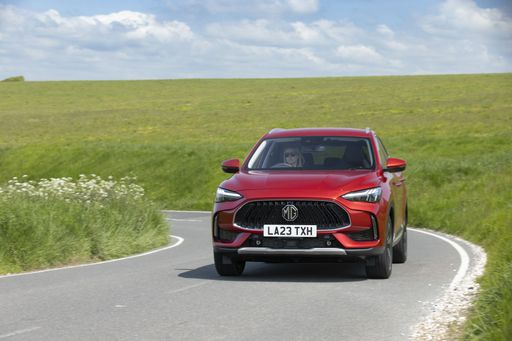 @ MG Motor / SAIC Motor Corporation
@ MG Motor / SAIC Motor Corporation
MG HS
Hyundai Tucson
Hyundai Tucson marries bold, sculpted looks with a clever, roomy cabin that feels smarter than its price tag suggests. It's composed on the road, easy to live with day-to-day, and a sensible choice for buyers who want SUV style without the showroom theatrics.
details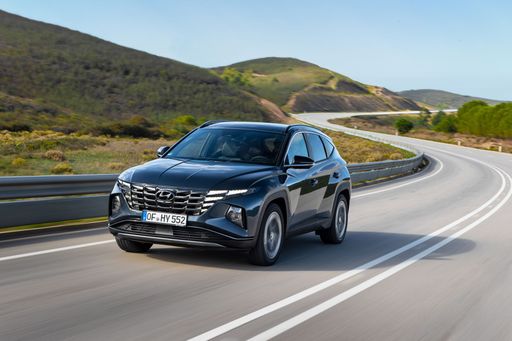 @ Hyundai Motor Company
@ Hyundai Motor Company
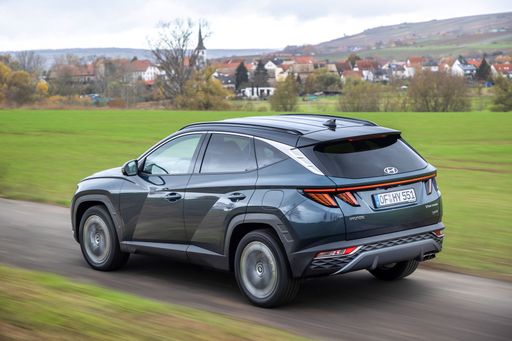 @ Hyundai Motor Company
@ Hyundai Motor Company
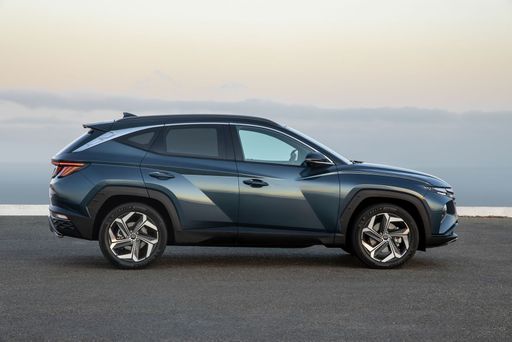 @ Hyundai Motor Company
@ Hyundai Motor Company
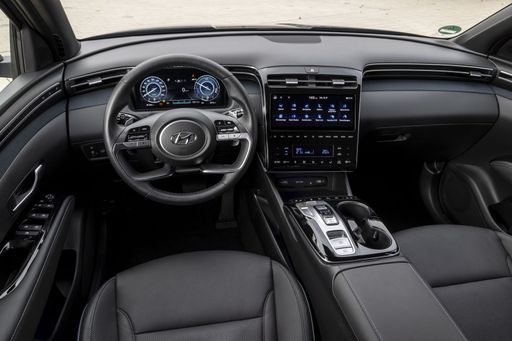 @ Hyundai Motor Company
@ Hyundai Motor Company
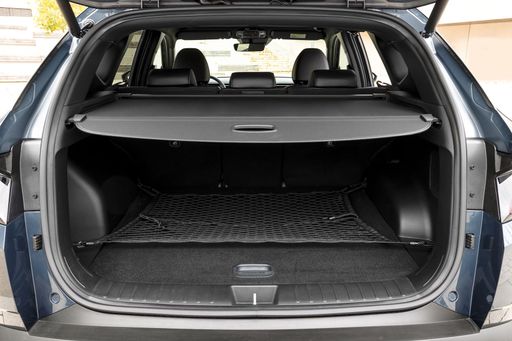 @ Hyundai Motor Company
@ Hyundai Motor Company
MG HS
The HS impresses with its sleek design and stylish exterior, setting a new standard in its class. Inside, it offers a spacious and comfortable cabin, complete with modern features that enhance the driving experience. With its focus on practicality and performance, the HS stands out as a compelling choice for those seeking a versatile and appealing vehicle.
details @ MG Motor / SAIC Motor Corporation
@ MG Motor / SAIC Motor Corporation
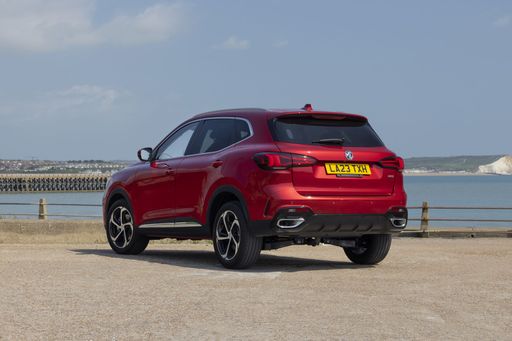 @ MG Motor / SAIC Motor Corporation
@ MG Motor / SAIC Motor Corporation
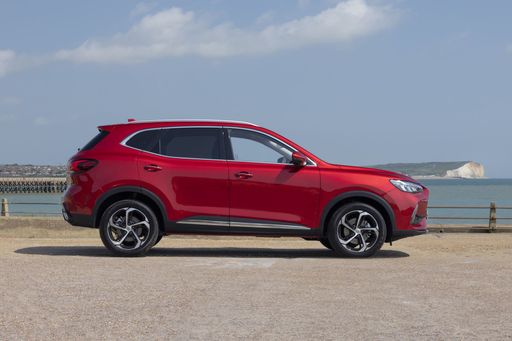 @ MG Motor / SAIC Motor Corporation
@ MG Motor / SAIC Motor Corporation
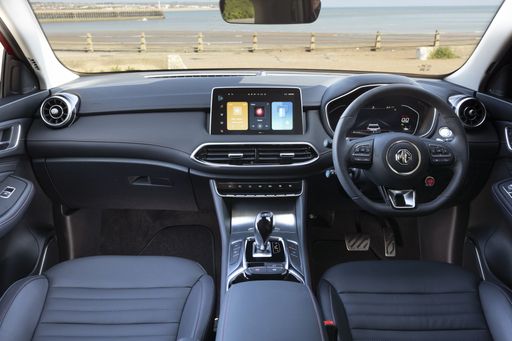 @ MG Motor / SAIC Motor Corporation
@ MG Motor / SAIC Motor Corporation
 @ Hyundai Motor Company
@ Hyundai Motor Company
|
 @ MG Motor / SAIC Motor Corporation
@ MG Motor / SAIC Motor Corporation
|
|
|
|
Costs and Consumption |
|
|---|---|
|
Price
30600 - 46300 £
|
Price
-
|
|
Consumption L/100km
1 - 6.9 L
|
Consumption L/100km
-
|
|
Consumption kWh/100km
-
|
Consumption kWh/100km
-
|
|
Electric Range
64 - 70 km
|
Electric Range
-
|
|
Battery Capacity
-
|
Battery Capacity
-
|
|
co2
22 - 156 g/km
|
co2
-
|
|
Fuel tank capacity
42 - 54 L
|
Fuel tank capacity
-
|
Dimensions and Body |
|
|---|---|
|
Body Type
SUV
|
Body Type
-
|
|
Seats
5
|
Seats
-
|
|
Doors
5
|
Doors
-
|
|
Curb weight
1520 - 1889 kg
|
Curb weight
-
|
|
Trunk capacity
546 - 620 L
|
Trunk capacity
-
|
|
Length
4510 - 4520 mm
|
Length
-
|
|
Width
1865 mm
|
Width
-
|
|
Height
1650 mm
|
Height
-
|
|
Max trunk capacity
1721 - 1799 L
|
Max trunk capacity
-
|
|
Payload
525 - 545 kg
|
Payload
-
|
Engine and Performance |
|
|---|---|
|
Engine Type
Diesel MHEV, Petrol MHEV, Petrol, Full Hybrid, Plugin Hybrid
|
Engine Type
-
|
|
Transmission
Automatic, Manuel
|
Transmission
-
|
|
Transmission Detail
Dual-Clutch Automatic, Manual Gearbox, Automatic Gearbox
|
Transmission Detail
-
|
|
Drive Type
Front-Wheel Drive, All-Wheel Drive
|
Drive Type
-
|
|
Power HP
136 - 252 HP
|
Power HP
-
|
|
Acceleration 0-100km/h
7.9 - 11.6 s
|
Acceleration 0-100km/h
-
|
|
Max Speed
180 - 194 km/h
|
Max Speed
-
|
|
Torque
265 - 367 Nm
|
Torque
-
|
|
Number of Cylinders
4
|
Number of Cylinders
-
|
|
Power kW
100 - 185 kW
|
Power kW
-
|
|
Engine capacity
1598 cm3
|
Engine capacity
-
|
General |
|
|---|---|
|
Model Year
2024
|
Model Year
-
|
|
CO2 Efficiency Class
E, F, D, B
|
CO2 Efficiency Class
-
|
|
Brand
Hyundai
|
Brand
-
|
What drive types are available for the Hyundai Tucson?
Available configurations include Front-Wheel Drive or All-Wheel Drive.
The prices and data displayed are estimates based on German list prices and may vary by country. This information is not legally binding.
